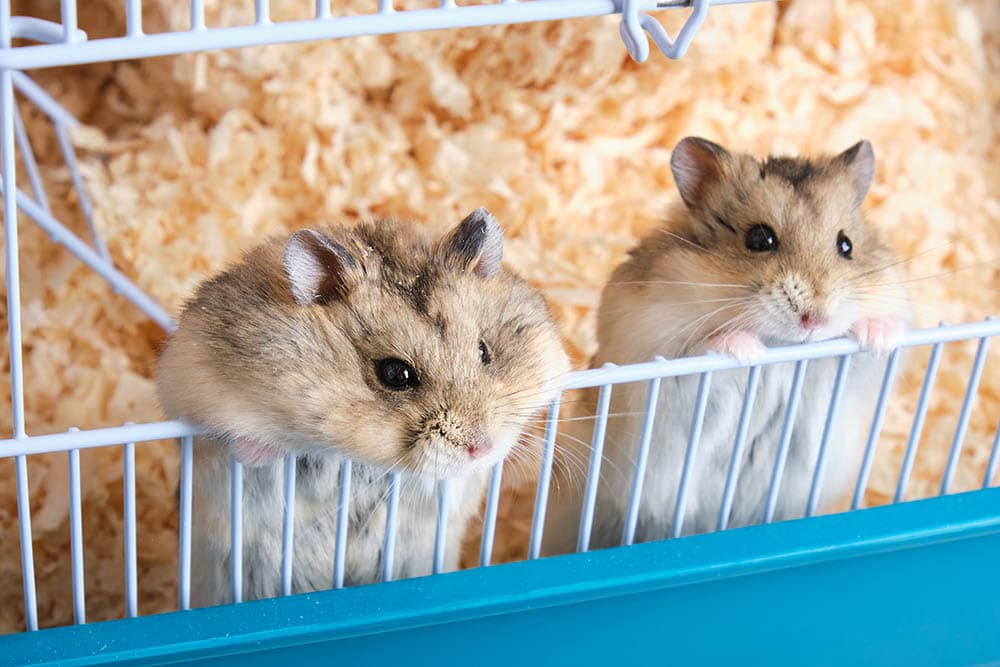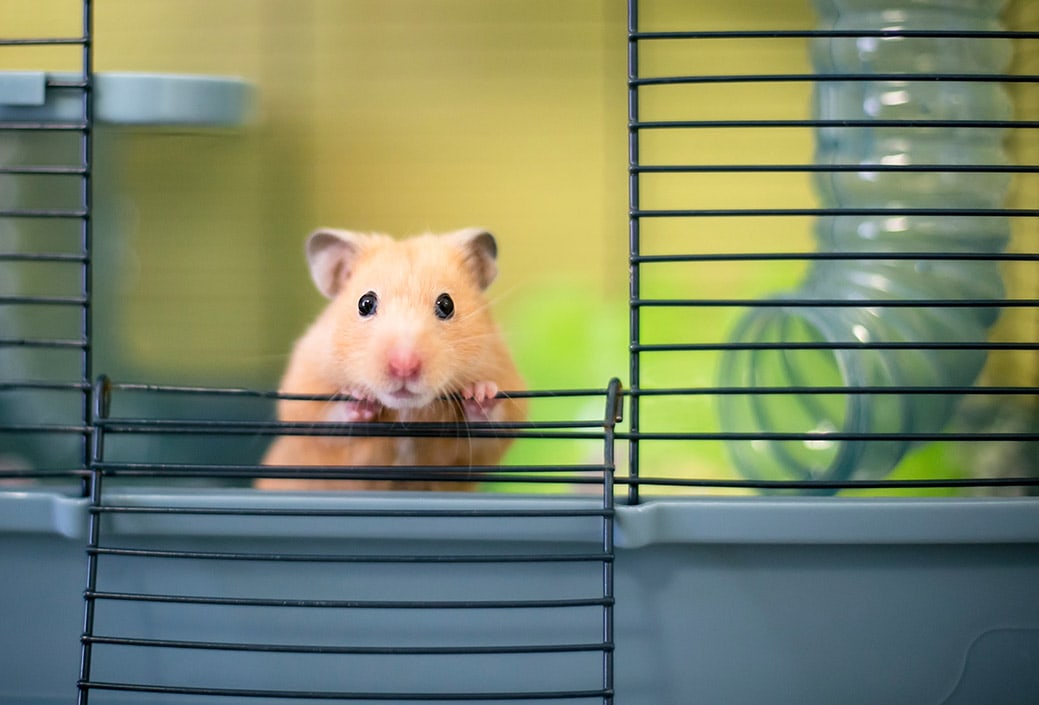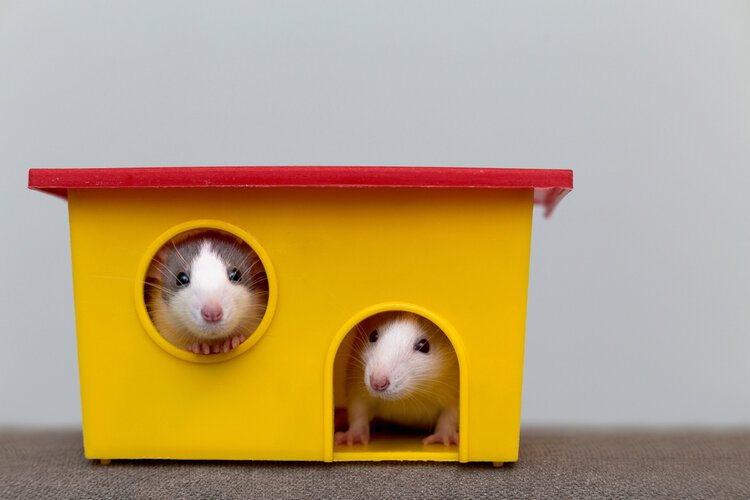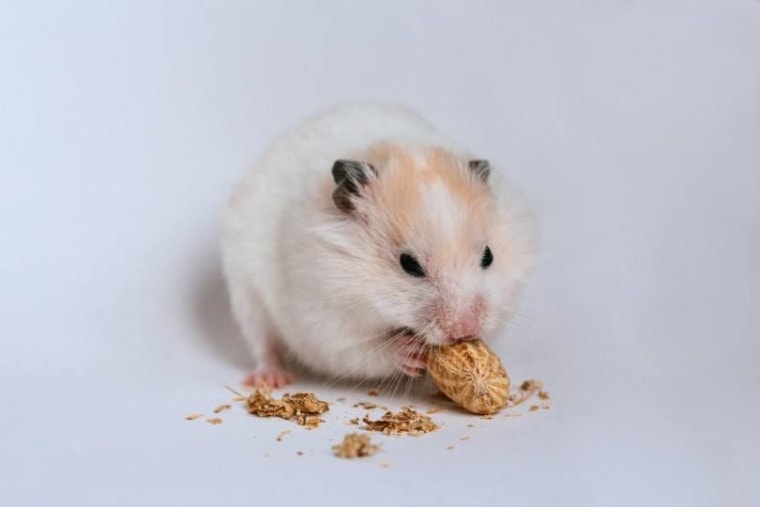
Click to Skip Ahead
While people keep several species of hamsters, the Golden or Syrian Hamster (Mesocricetus auratus) is the most common one for pets and laboratories. The Syrian hamsters we have as pets today are all thought to descend from two litters of hamsters that were collected from the wild in 1930 and 1971. Wild hamsters are omnivores that eat various foods, from insects to seeds and nuts. Our list below includes some foods that technically aren’t nuts, but people tend to group them with this snack food. So, what nuts can hamsters safely eat? Let’s find out.
The 8 Nuts Safe for Hamsters to Eat
1. Cashews
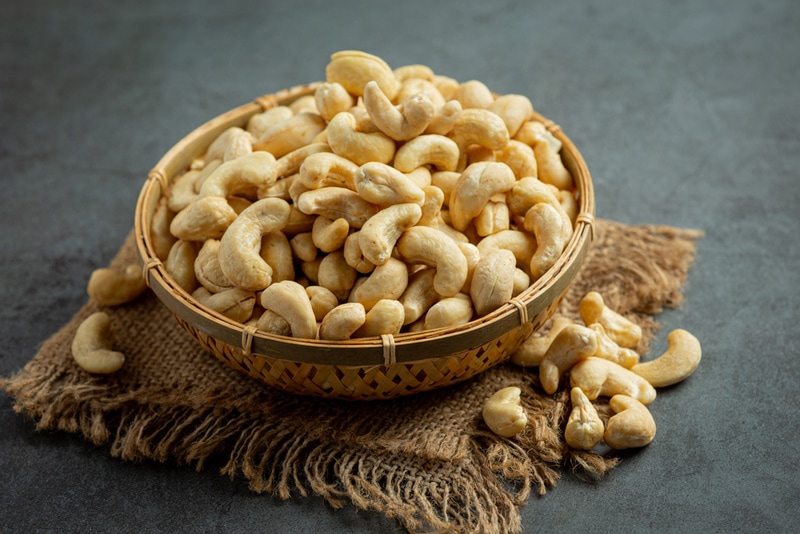
The cashew is actually a seed, but it’s also a popular addition to mixed nuts. It is high in protein and several vital nutrients, including calcium, potassium, and magnesium. Its vitamin content is negligible. It’s also high in fat and calories, a common theme for this group of foods. They are usually sold shelled, eliminating that health risk.
2. Hazelnuts
Hazelnuts, also known as filberts, are a popular snack food and ingredient in cooking and baking. Despite the name, they are fruits of the tree of the same name. They also have a higher fat and calorie count than our last entry. That makes this one a treat for special occasions only. They come in various cultivars and flavors. We suggest skinning them before offering any to your pet.
3. Macadamia Nuts
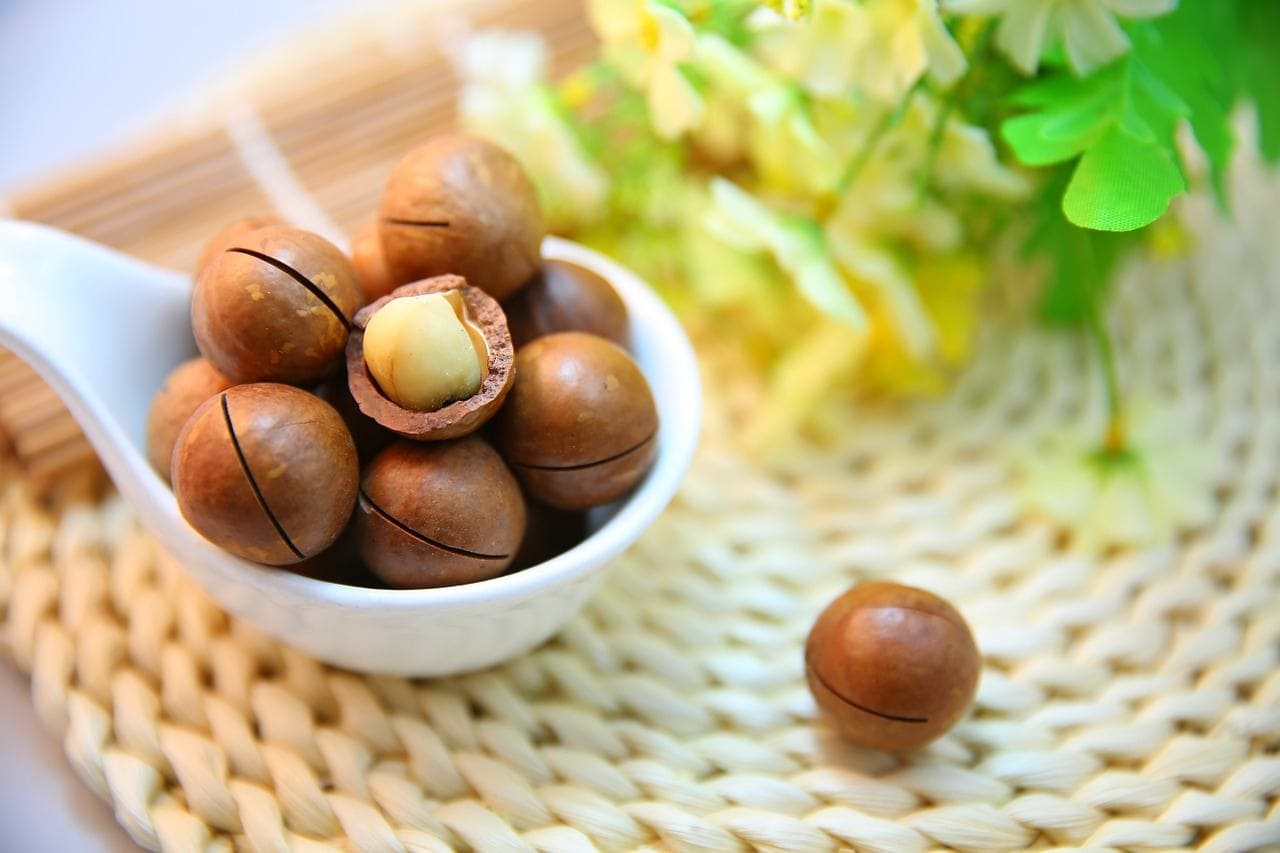
Macadamia nuts are an anomaly on our list. Toxicity has only been documented for dogs.1 They are native to Australia, although the ones you buy at the store are likely from Hawaii. This food has even more fat and calories than the last two. They also contain less protein and lower amounts of many vital nutrients. You’ll likely see shelled nuts at the store since they can be a difficult one to crack.
4. Peanuts
Peanuts aren’t nuts but legumes. However, that takes nothing away from their great taste. Many dog owners give their pups peanut butter as a treat. We don’t recommend doing so for hamsters because of the concentrated fat content. However, peanuts are a rich source of potassium and phosphorus, with decent amounts of protein and vitamins. Never offer your hamster a salted or sugary peanut or one with any additional flavorings. If you do opt to give your furry friend a peanut, one plain nut once a week is enough.
5. Pecans
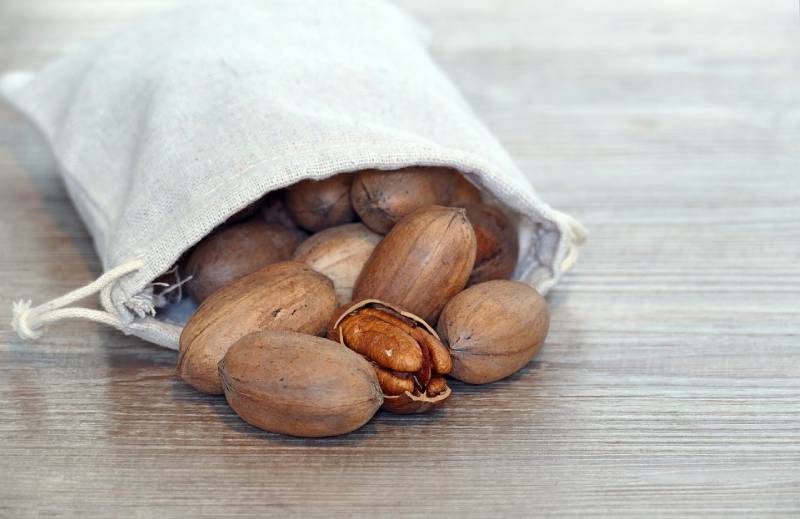
The buttery taste of pecans comes from their high fat content on par with macadamia nuts. They have a scant amount of water and over 73% fat from their rich oil. Nevertheless, their great taste makes them a popular choice for baked goods. We suggest breaking halves in two to cut down on calories. They should remain a rare treat.
6. Pine Nuts
Pine nuts are the kernels extracted from the seeds of various species of pine trees. They are also another trade-off species, providing copious amounts of nutrition with fat and calories tagging along for the ride. However, their relatively small size makes it easier for portion control. Proper storage is imperative with this food, as it can become rancid.
7. Pistachios
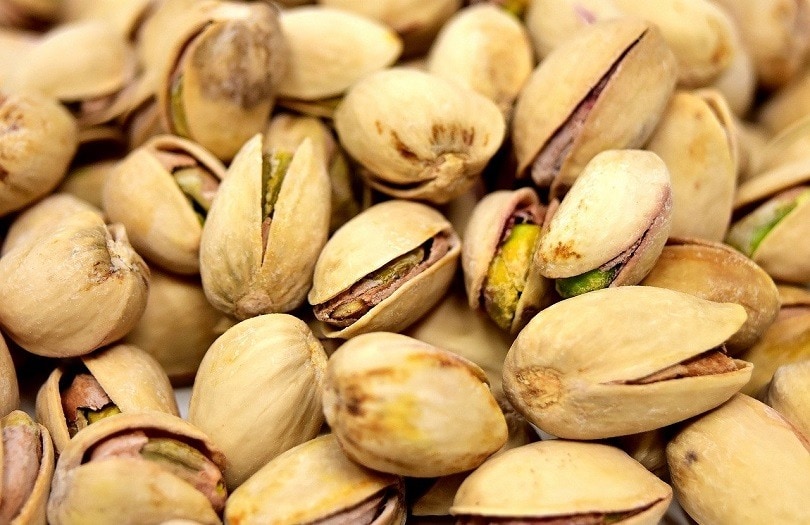
Pistachios are related to cashews. They are a potassium powerhouse with a 100 gram serving containing just under 1g of potassium. We recommend shelling them before offering them to your hamster to reduce choking hazard potential. We also suggest opting for the tan-colored nuts instead of those dyed red to avoid staining your pet’s fur. The colors are non-toxic and more annoying than anything else.
8. Walnuts
Walnuts are truly a multi-purpose nut. Snacking and baking are popular uses. In addition, the trees produce excellent lumber, and the shells make an attractive stain. We recommend shelling walnuts before giving them to your pet hamster. You can easily break the meat into small pieces for a treat. While not toxic to hamsters and cats, black walnuts are poisonous to horses and dogs.
The 2 Nuts Not Safe for Hamsters to Eat
1. Almonds
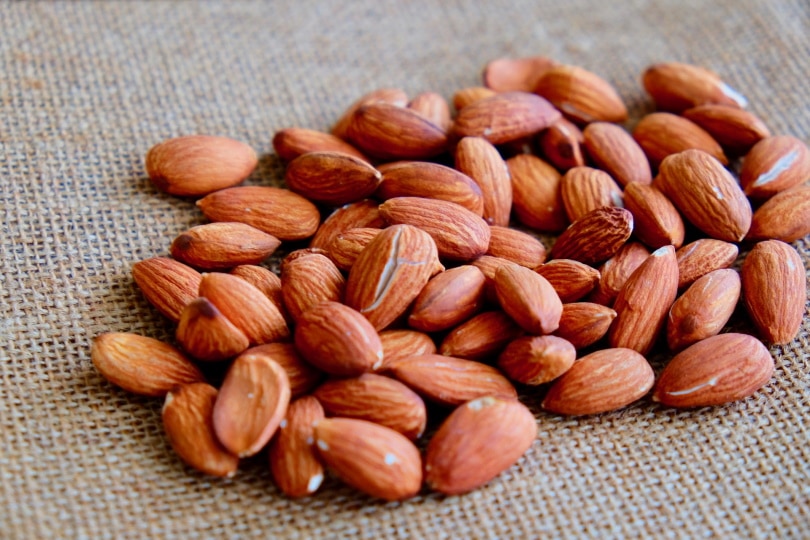
Almonds are edible and safe for your hamster, as long as you’re using the sweet variety, not the bitter variety. Bitter almonds which are technically drupes, like peaches, contain cyanogenic glycosides. These chemicals can provide the raw materials for hydrogen cyanide to release inside the unfortunate animal. Bitter almonds contain 42 times more of these compounds than sweet almonds.2
2. Any Fruit Pit or Seed
This same caution about cyanogenic glycosides applies to many fruit pits or seeds, including apples, cherries, peaches and apricots. The toxins exist within these plant parts. A lethal dose of hydrogen cyanide is as little as 50-300 mg in humans, depending on body weight. The concentration in a single pit or seed varies from 0.85mg/gram of apricot kernels, to 0.6mg/gram of apple seeds, to 1 mg/gram of bitter almonds, so even a tiny amount of these pits or seeds can be fatal for a tiny hamster.
How to Feed Your Hamster Nuts
Hamsters are hoarders. That’s worth remembering since your pet will undoubtedly like nuts. They’ll taste like candy to them. They will probably opt for them if given a choice between nuts and their regular diet. Many hamsters will cache their food in their burrows. It makes evolutionary sense to have a ready source of food available. It also reduces their chances of predation since they can venture outside less often.
All the nuts on our list are relatively high in calories and fat, although many are also quite nutritious. Nevertheless, none are complete and balanced and are not a substitute for your pet’s regular diet. These reasons mean you should reserve nuts as a special treat for your pet hamster, despite their place in the diets of their wild counterparts. Those animals are likely more active and working off the extra calories.
Hamsters can also easily become obese and suffer from the associated health risks. Therefore, we recommend giving your pet only one nut at a time, only once a week. You can use it to bond with your hamster or as a training aid. For example, you can offer a quarter of a nut during outside-cage playtime to foster a positive association with human interaction.
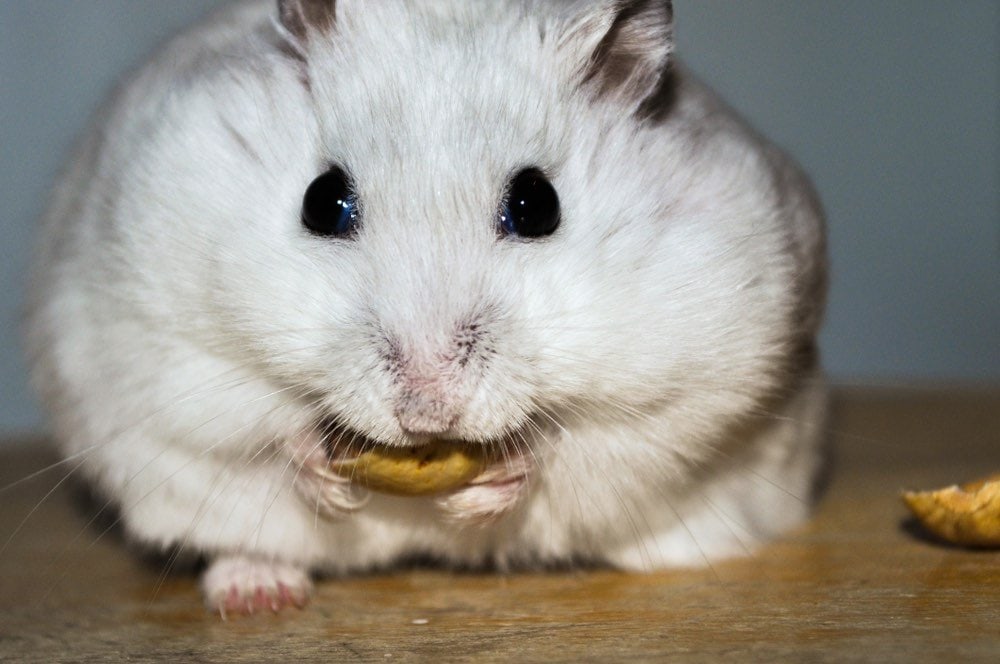
Conclusion
Seeds and nuts are a tasty part of a hamster’s diet, both as pets and in the wild. However, these foods are naturally high in fat, protein, and calories (to give a new plant a good start in life if it germinates). Therefore, it’s imperative to limit them in your rodent’s daily intake. While they’ll undoubtedly enjoy them, your hamster may also hoard them. An occasional treat alongside a good quality pellet-based hamster food will ensure your hamster has everything it needs, but not too much.
Featured Image Credit: polya_olya, Shutterstock


